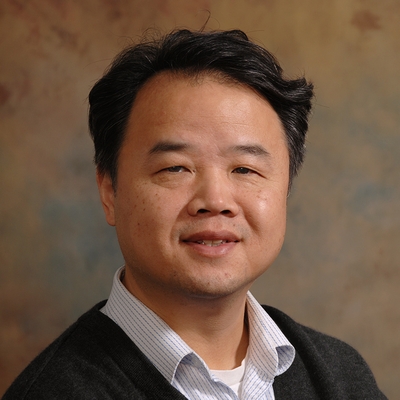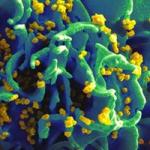
Research Topics
The Genome Instability and Chromatin Remodeling Section (GICRS), led by Weidong Wang, focuses on three main projects: (1) protein complexes involved in genome instability diseases and the DNA damage response, (2) a DNA/RNA dual-activity topoisomerase complex that regulates DNA transcription, mRNA translation, coronavirus RNA replication, neurodevelopment and mental disorders; and (3) chromatin-remodeling complexes that regulate transcription, replication and repair. The Section has a strong interest in nucleic acid remodeling complexes that play essential roles in DNA transcription, replication, and repair, as well as in mRNA translation and viral RNA replication. Because many of these processes affect life span, and their defects are linked to age-related disorders, genome instability syndromes, and cancer, the Section investigates if DNA and RNA remodeling complexes play crucial roles in maintaining normal aging and preventing premature aging disorders. The team has used biochemical approaches to define targeted nucleic acid-remodeling complexes from mammalian cell extracts; using this method, they have successfully identified components of the Fanconi anemia core complex, Bloom syndrome complex, ATRX-syndrome complex, FANCM-MHF DNA remodeling complex, RNF8-FAAP20 ubiquitin cascade, several chromatin-remodeling complexes (BAF, PBAF, NURD), and Top3b-TDRD3 topoisomerase complexes. Given that Top3b is the first dual-activity topoisomerase identified in eukaryotes, the group is working to elucidate how it functions with its partners, TDRD3 and FMRP (Fragile X syndrome proteins), to solve topological problems in mRNA and viral RNA metabolism.
Biography
Dr. Wang trained as a biochemist and molecular biologist at both UCLA, where he obtained his Ph.D., and Stanford University, where he trained as a postdoctoral fellow. He joined the National Institute on Aging Intramural Research Program (NIA IRP), NIH, in 1997; and is Chief of The Genome Instability and Chromatin Remodeling Section (GICRS) in the Laboratory of Genetics and Genomics, NIA IRP, NIH. His research focuses on the regulation of mammalian gene expression at the chromatin level. He has purified to homogeneity one of the first ATP-dependent chromatin-remodeling complexes in mammals, and has subsequently cloned all the subunits within one complex. His group has purified and characterized chromatin-remodeling complexes involved in human ATRX syndrome (X-linked mental retardation and a-thalassemia); helicase complexes involved in the Bloom syndrome and Rothmund-Thompson syndrome; and a ubiquitin ligase complex involved in a genomic instability disease, Fanconi anemia. His group recently discovered the first dual-activity topoisomerase complex in mammals, and has been studying its function in preventing mental disorders, maintaining normal lifespan, and regulating coronavirus RNA replication.
Selected Publications
- Meetei AR, de Winter JP, Medhurst AL, Wallisch M, Waisfisz Q, van de Vrugt HJ, Oostra AB, Yan Z, Ling C, Bishop CE, Hoatlin ME, Joenje H, Wang W. A novel ubiquitin ligase is deficient in Fanconi anemia. Nat Genet. 2003;35(2):165-70.
- Yan Z, Delannoy M, Ling C, Daee D, Osman F, Muniandy PA, Shen X, Oostra AB, Du H, Steltenpool J, Lin T, Schuster B, Décaillet C, Stasiak A, Stasiak AZ, Stone S, Hoatlin ME, Schindler D, Woodcock CL, Joenje H, Sen R, de Winter JP, Li L, Seidman MM, Whitby MC, Myung K, Constantinou A, Wang W. A histone-fold complex and FANCM form a conserved DNA-remodeling complex to maintain genome stability. Mol Cell. 2010;37(6):865-78.
- Xu D, Shen W, Guo R, Xue Y, Peng W, Sima J, Yang J, Sharov A, Srikantan S, Yang J, Fox D 3rd, Qian Y, Martindale JL, Piao Y, Machamer J, Joshi SR, Mohanty S, Shaw AC, Lloyd TE, Brown GW, Ko MS, Gorospe M, Zou S, Wang W. Top3β is an RNA topoisomerase that works with fragile X syndrome protein to promote synapse formation. Nat Neurosci. 2013;16(9):1238-47.
- Joo Y, Xue Y, Wang Y, McDevitt RA, Sah N, Bossi S, Su S, Lee SK, Peng W, Xie A, Zhang Y, Ding Y, Ku WL, Ghosh S, Fishbein K, Shen W, Spencer R, Becker K, Zhao K, Mattson MP, van Praag H, Sharov A, Wang W. Topoisomerase 3β knockout mice show transcriptional and behavioural impairments associated with neurogenesis and synaptic plasticity. Nat Commun. 2020;11(1):3143.
- Lee SK, Xue Y, Shen W, Zhang Y, Joo Y, Ahmad M, Chinen M, Ding Y, Ku WL, De S, Lehrmann E, Becker KG, Lei EP, Zhao K, Zou S, Sharov A, Wang W. Topoisomerase 3β interacts with RNAi machinery to promote heterochromatin formation and transcriptional silencing in Drosophila. Nat Commun. 2018;9(1):4946.
Related Scientific Focus Areas


Molecular Biology and Biochemistry
View additional Principal Investigators in Molecular Biology and Biochemistry



This page was last updated on Wednesday, August 11, 2021